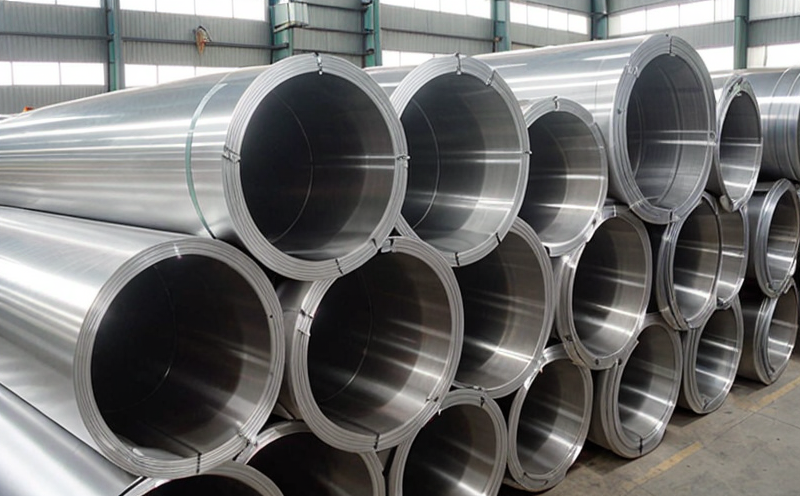IEC 60068-2-30 Humidity Cyclic Testing for Marine Electronics
The IEC 60068-2-30 standard is widely recognized as a crucial method for assessing the resistance of electronic components to humidity cycling. In marine electronics, where equipment must withstand harsh environments and frequent exposure to moisture, this test plays a vital role in ensuring product reliability and durability.
Marine electronics are subject to unique challenges due to their operating environment. These devices often encounter high humidity levels, salt water intrusion, and fluctuating temperature conditions. The IEC 60068-2-30 standard provides a controlled method for simulating these environmental stresses, thereby helping manufacturers identify potential weaknesses in their products before they enter the harsh marine environment.
The test involves exposing specimens to cycles of humidity and temperature changes that mimic real-world conditions at sea. This includes periods of high humidity followed by low humidity or even dryness. The goal is to evaluate how well the components can withstand these environmental variations without failure. By subjecting electronic devices to this standardized cyclic testing, manufacturers can ensure their products meet stringent quality standards.
The process begins with careful preparation and selection of appropriate specimens for testing. These samples are selected based on their typical use in marine environments and expected performance under stress conditions. Proper specimen preparation ensures accurate results reflecting real-world scenarios. Once prepared, the specimens undergo a series of cyclic exposure periods where they experience changes between specified humidity levels.
Testing according to IEC 60068-2-30 requires specialized equipment capable of maintaining precise control over temperature and relative humidity during each cycle. This ensures consistent and repeatable results that are essential for accurate evaluation. The test protocol specifies exact conditions including duration, frequency, and range of temperature and humidity changes.
After completing all cycles, thorough inspection follows to determine if any damage has occurred due to exposure. Any sign of corrosion, degradation, or failure indicates a need for improvement in design or materials used. Results from these tests provide valuable insights into the reliability and robustness of marine electronics under demanding environmental conditions.
The importance of this type of testing cannot be overstated given its direct impact on maintaining safety at sea. Failures in critical components can lead to dangerous situations such as navigation errors, communication breakdowns, or power outages—all potentially life-threatening scenarios. Ensuring compliance with IEC 60068-2-30 helps prevent these risks by verifying that products meet necessary durability requirements.
By adhering strictly to this international standard, manufacturers can demonstrate their commitment to producing high-quality marine electronics capable of performing reliably even in extreme conditions. This not only enhances customer confidence but also contributes significantly towards overall maritime safety and efficiency.
Applied Standards
| Standard | Description |
|---|---|
| IEC 60068-2-30 | Cyclic thermal shock testing for electric and electronic components. |
Customer Impact and Satisfaction
By incorporating IEC 60068-2-30 humidity cyclic testing into their quality assurance processes, manufacturers significantly enhance the reliability and longevity of marine electronics. This leads to increased customer satisfaction as users experience fewer failures and maintenance issues over time.
The ability to confidently rely on tested products fosters trust between buyers and sellers within the industry. Satisfied customers are more likely to recommend these solutions to others, contributing positively to brand reputation and market standing.
Furthermore, compliance with internationally recognized standards like IEC 60068-2-30 can open up new markets and opportunities for businesses operating globally. Meeting specific regional requirements or regulations becomes easier when already meeting a widely accepted standard.
Overall, this testing ensures that manufacturers deliver products fit for purpose, thereby improving operational efficiency at sea while reducing costs associated with repairs and replacements due to premature failures.
Competitive Advantage and Market Impact
- Pioneering use of IEC 60068-2-30 testing can set a company apart from competitors by ensuring superior product reliability.
- Maintaining consistent quality through rigorous cyclic environmental stress tests demonstrates commitment to excellence.
- Meeting international standards enhances credibility and opens doors to export markets demanding stringent quality controls.
In today’s competitive market, where even small improvements in product performance can make a significant difference, adhering to such recognized protocols is crucial. Companies investing in thorough testing not only protect their reputations but also contribute positively towards the advancement of maritime technology.





